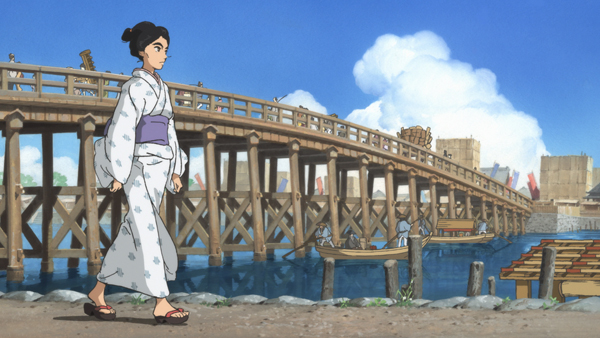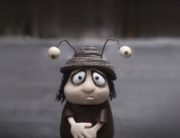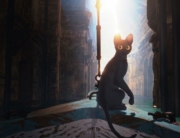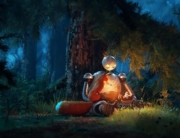Director Keiichi Hara’s animated Miss Hokusai is a visually delightful, thought provoking, and quirky exploration of the dynamic that might have existed between two artists. It’s based on the manga series “Sarusuberi” by Hinako Sugiura (1958–2005), which focuses on a fictionalized portrayal of master Japanese artist Katsushika Hokusai’s daughter O-Ei.
Little is known about O-Ei Hokusai, who has 10 surviving works to her credit, including Night Scene in the Yoshiwara. She spent years living with and studying under her famous father, and many believe that some of Hokusai’s commissioned works, as well as paintings released in his final years of ill health, were primarily by her hand. Hara takes advantage of this lack of hard biographical data to create a complex character, who is as bold and defiant around her father as she is shy and reticent around strangers.
A series of vignettes encompass a year in the life of O-Ei and her family in 1814 Edo, now Tokyo. O-Ei (voiced by Anne Higashide) lives with her father, whom she calls Tetsuzo (Yutaka Metsushige), and a fellow artist, Zenjiro (Gaku Hamada), in a squalid apartment littered with discarded drawings and the detritus of their craft. All three make a living primarily through creating erotic drawings, although the well-known Tetsuzo sporadically receives much larger commissions.
O-Ei is repeatedly angered by her father’s failings as a parent, but is nevertheless in awe of his artistic mastery. She is also competitive and proud of her exceptional talent. Tetsuzo acknowledges O-Ei’s technical skill, but is critical of her efforts, claiming her immaturity and lack of experience prevent her from truly bringing her drawings to life. The often drunk Zenjiro provides comic relief to the tense atmosphere as O-Ei and Tetsuzo struggle for perfection in their art.
Meanwhile, Tetsuzo refuses to make time for his youngest daughter, O-Nao (Shion Shimizu), who is blind. O-Ei , though, frequently visits her little sister and lovingly teaches her about the world around her through sound and touch. One particularly beautiful episode features O-Ei taking O-Nao on a walk through an early snowfall, describing the bright red camellias that peak through the layers of white.
While O-Nao will never understand her father’s unwillingness to visit O-Nao, Tetsuzo is only avoiding her because he is frightened by her illness. Superstition and magic play a large role in the age of the samurai, and Hara highlights it as an integral part of Tetsuzo’s art.
Hara provides O-Ei with a tentative romantic interest that leads to some awkward and humorous encounters. Among the more quirky aspects of the film that delve beyond the primary themes of art and family are frequent references and visits to the infamous Japanese tea houses, in particular one with a male geisha who intends to satisfy O-Ei’s curiosity and ultimately enrich her erotica.
There are a few shortcomings, such as the brief but jarring inclusion of rock music at the beginning and end. And though it is distributed by GKids, the movie is not aimed for young children. Otherwise, this is a beautifully rendered, intriguing imagining of a little-known female artist’s life and her relationship with her illustrious father. It will have broad appeal among art enthusiasts, particularly those with an appreciation for manga and anime.

















Leave A Comment